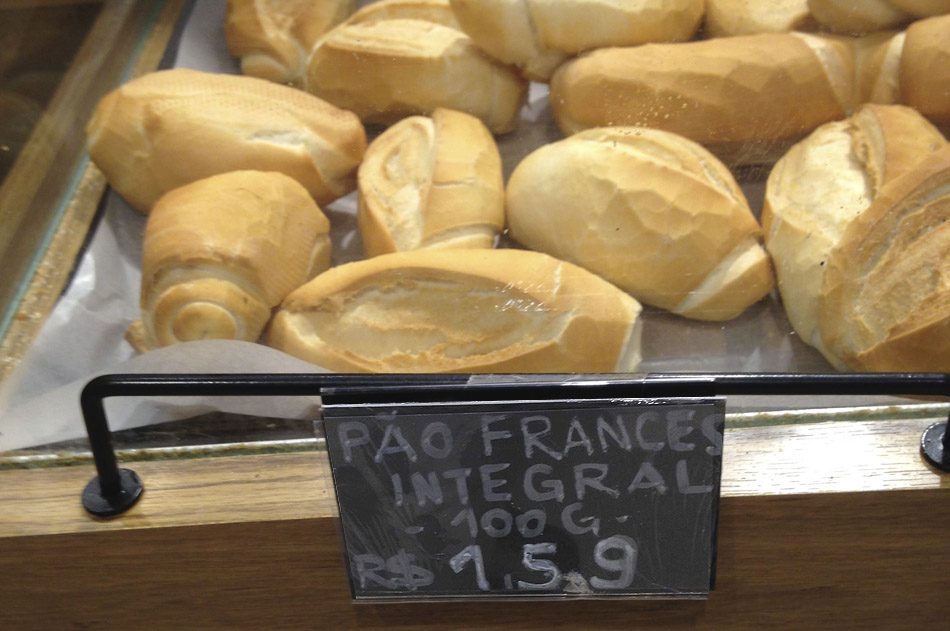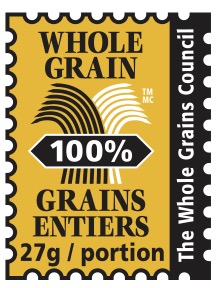Share This
We know diving into the nitty-gritty details of government regulations isn’t everyone’s cup of tea, but bear with us. There are new regulations coming out of Brazil that are going to have a huge impact on the whole grain environment in Brazil and we thought you’d want to hear about it.
Beginning in the spring of 2022, grain products sold in Brazil will be subject to a new set of labeling regulations, which is great news for Brazilian consumers looking for whole grain options and for manufacturers making whole grain products. A few years ago, when our team travelled to Brazil to meet with government representatives there, we were surprised at some of the products we saw in the supermarket labeled “whole grain” that contained only refined grain ingredients. When anyone can label anything whole grain, the term loses its meaning. Consumers can’t find the real whole grain products they are looking for, and manufacturers making truly whole grain products must work even harder to gain consumer trust and compete effectively against companies making false whole grain claims.
Since our 2017 visit to Brazil, ANVISA, the Brazilian Health Regulatory Agency, has worked diligently to clearly define what counts as a whole grain ingredient and to outline what is required of a product in order to call it “whole grain bread,” “whole grain pizza,” etc. Going forward, products calling themselves “whole grain” or using any kind of whole grain labeling (such as the Whole Grain Stamp) will need to meet two compositional requirements:
- At least 30% of the product’s ingredients (by weight) will need to meet the definition of a whole grain ingredient (essentially, that all three original parts of the kernel – endosperm, bran, and germ – must be present in their original proportions).
- The product will need to contain more whole grain ingredients (by weight) than refined grain ingredients (which are defined as grain ingredients missing at least some portion of at least one of its original parts – endosperm, bran, and germ).
Companies highlighting their product’s whole grain content with the Whole Grain Stamp will also have to declare the percent of the product that is whole grain on the product packaging next to the Whole Grain Stamp. In order to align our Stamp program with this labeling requirement, products using the 50%+ Stamp will need to make at least half their product (by weight) whole grain, and products using the 100% Stamp will need to contain only whole grain ingredients, whereas in most other parts of the world, these Stamp determinations are made based on the percent of the grain that is whole grain.
What all of these changes mean is that those white breads dressed up in misleading whole grain labels are going to be a thing of the past. By requiring that almost a third of the product be whole grain and that more of the grain be whole than refined, the government is ensuring that products using whole grain labeling are delivering a significant portion of whole grains. The Whole Grain Stamp will continue to give consumers information about the specific whole grain gram content of the products they are buying so that they know exactly what they’re getting.
We wish the Brazilian government had taken a dry-weight approach to evaluating the percentage of a product that is whole so that all products, regardless of their natural moisture content, were evaluated on even footing. But, setting that suggestion aside, these new rules go a long way toward setting the groundwork for consumers to be able to identify whole grains when shopping and leveling the playing field for manufacturers making whole grain foods so that they will no longer have to compete directly with companies making false claims.
Adapting the Whole Grain Stamp to Suit Local Regulations
Adapting our Stamp to fit with local guidelines has been our approach since the early days of the Whole Grain Stamp program. When we introduced the Whole Grain Stamp to the US market in 2005, we had no inkling of how widespread its use would become over the next decade and a half. Today, the Whole Grain Stamp is used on almost 14,000 products in 64 countries around the world.
In order to create a third-party certification and labeling program that works within the regulatory framework of so many different countries, we’ve always worked closely with regulatory groups, adapting our program as necessary to comply with local guidelines. Sometimes that has meant rephrasing the language on our Whole Grain Stamp graphic, and other times it’s called for a change in how we evaluate a product’s eligibility for the Stamp, as in the case of Brazilian products starting in 2022.
Canada is another great example of this. The Canadian government requires that packages sold in Canada must be labeled with both French and English, so we created a bilingual version of the Whole Grain Stamp that would communicate the message of the Stamp effectively in both languages. Additionally, much like the new Brazilian rules, Canadian labeling regulations require that only products where 100% of the ingredients are whole grain can claim to be “100% whole grain” or use the 100% Whole Grain Stamp. In the US, by contrast, products where 100% of the grain is whole grain can use the 100% Whole Grain Stamp. Similarly, the 50%+ Whole Grain Stamp is reserved for products where at least 50% of the product (by weight) is whole grain, whereas in the US, products that make at least 50% of their grain whole can use the 50%+ Stamp. (As in the US, Canadian products must contain a minimum of 8g of whole grain per serving in order to bear the Whole Grain Stamp.)
Being able to adapt the Whole Grain Stamp program to fit within regulatory settings that are different or stricter in their labeling requirements is what allows the Whole Grain Stamp program to have the kind of international presence and impact it’s famous for. We’re so happy to see Brazil taking a bold leap forward in its regulatory guidance and we’re eager to support our Brazilian members as they make the shift into this new framework. (Caroline)




Add a Comment